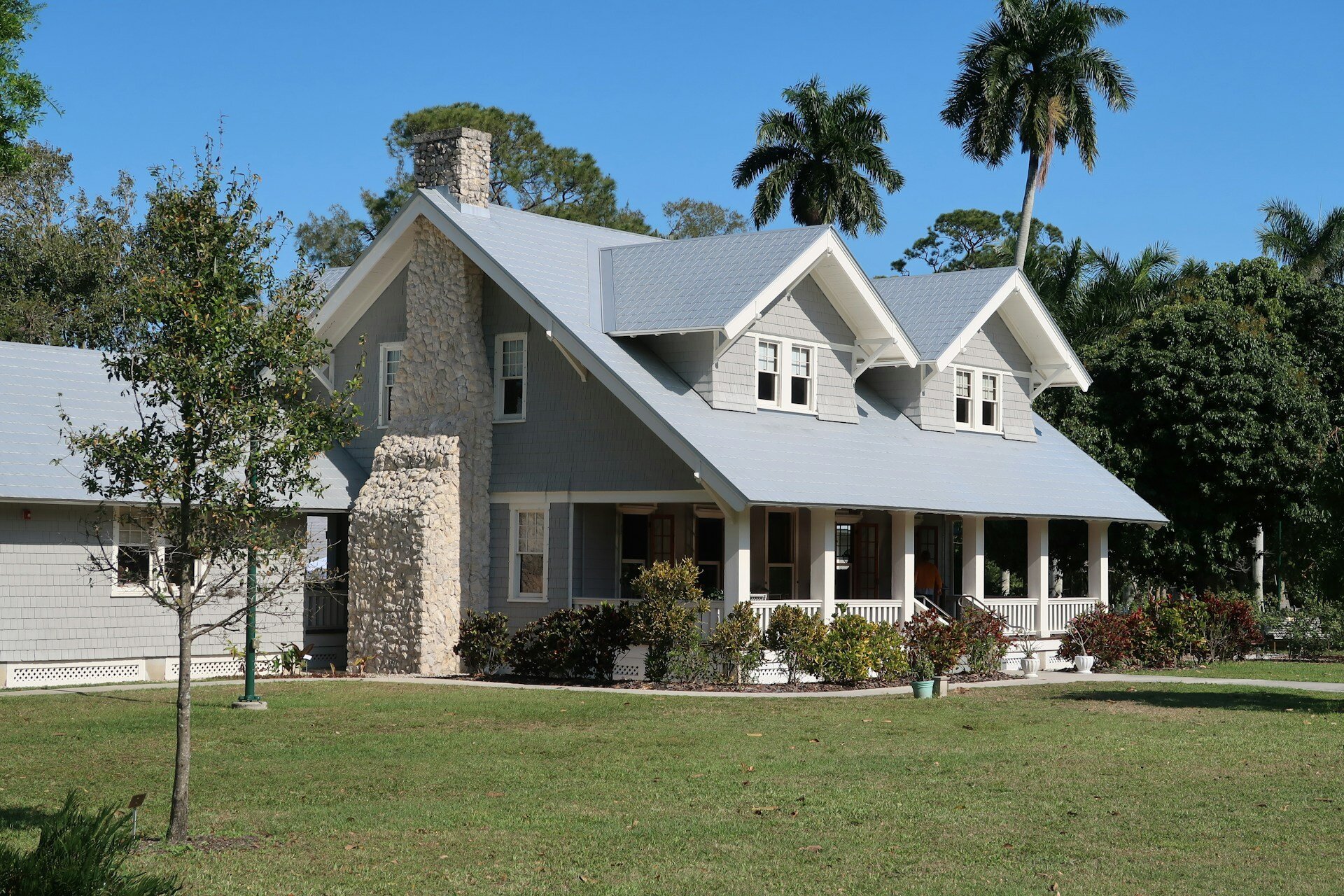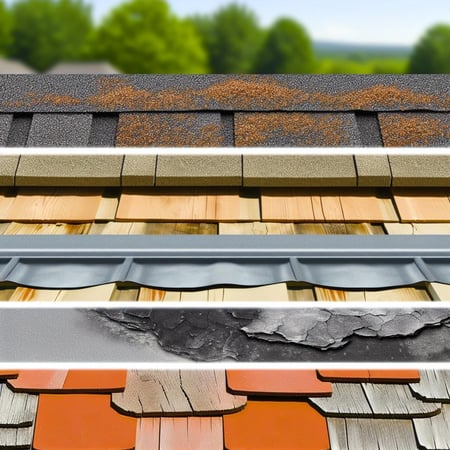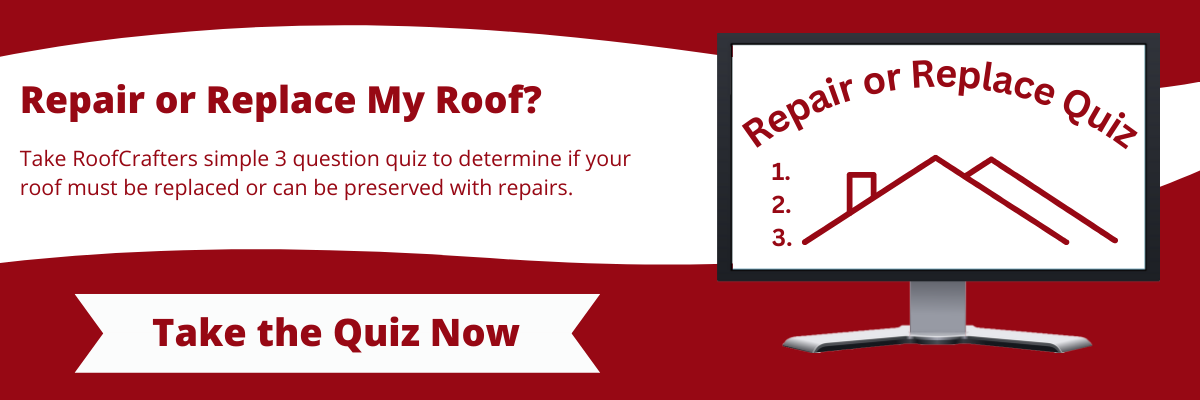How to Figure Out the Age of Your Roof
October , 2024 | 6 min. read

When it comes to maintaining your home, knowing the age of your roof is essential. A roof’s age impacts its condition, durability, and the type of maintenance it may require.
At RoofCrafters, we know that whether you’re a new homeowner or you’ve lived in your house for years, determining your roof’s age can help you plan ahead for necessary repairs or replacements. After all, knowledge is power!
That being said, allow us to walk you through the different ways to figure out your roof’s age, even if you don’t have immediate access to its installation details. We’ll cover everything from signs of wear and tear to checking documentation and other clues. By the end, you’ll know exactly how to assess your roof’s age and what steps to take next.
Why Is Knowing Your Roof’s Age Important?

Before we dive into the how, let’s talk about why knowing your roof’s age matters.
Roofs have a lifespan that can range anywhere from 15 to 50 years, depending on the materials used and environmental conditions. Asphalt shingle roofs, for instance, typically last 20 to 30 years, while metal roofs can endure for up to 50 years. The older your roof is, the more susceptible it is to damage from weather, debris, and wear and tear. Knowing your roof’s age allows you to:
• Plan for future repairs or replacements.
• Budget for upcoming roofing expenses.
• Identify potential risks before leaks or structural issues arise.
Regular inspections and maintenance can extend the life of your roof, but at a certain point, repairs won’t cut it. That’s when knowing your roof’s age is crucial to decide if it’s time for a replacement.
How to Find the Age of Your Roof: 6 Key Methods

Check Your Home’s Paperwork
The most straightforward way to determine the age of your roof is to check the documentation that came with your home. Look through your:
• Home inspection report: If you had a home inspection before buying your property, the report might include an estimated roof age.
• Seller disclosures: Sellers are often required to disclose information about the roof, including its age or the last time it was replaced.
• Building permits: Depending on your location, major roof work, like a replacement, may require a building permit. If you have access to local records, you can see the exact date the roof was installed.
If none of these documents are available, don’t worry. There are still other ways to estimate your roof’s age.
Contact the Previous Homeowner
If you bought your home from a previous owner and can still contact them, they may be able to provide details about the roof’s installation. Previous homeowners might have records, receipts, or even photos from when the roof was replaced or repaired.
Be sure to ask if the roof had any warranties when it was installed. Many roofing warranties will specify an installation date, which can serve as a reliable reference point.
Inspect the Roofing Materials
Sometimes, you can estimate the age of your roof just by looking at it. Different roofing materials age in distinctive ways, so knowing what to look for can offer valuable clues.
• Asphalt shingles: As they age, asphalt shingles can start to curl, crack, or lose granules. If you notice significant wear, the shingles could be nearing the end of their lifespan.
• Wood shakes or shingles: These materials may split, warp, or even rot as they age, especially if exposed to moisture for long periods. Discoloration is another sign of age.
• Metal roofing: Though durable, metal roofs may rust or fade over time, particularly in areas prone to high moisture or salt air.
• Tile roofing: Cracks, broken tiles, or moss growth can indicate that your tile roof is aging and may need repair or replacement soon.
For any material, if your roof shows signs of aging, it’s important to get a professional opinion to determine how much life it has left.
Ask a Roofing Contractor
If you’re unable to pinpoint your roof’s age through paperwork or visual inspection, a roofing contractor can help. Contractors have experience in assessing the condition and age of various roofing materials. They may not be able to tell you the exact installation date, but they can give you a reliable estimate based on the roof’s condition.
Contractors can also help with any immediate repairs or suggest proactive maintenance to extend your roof’s life. Regular inspections are a great way to stay ahead of problems, especially as your roof gets older.
Search for Manufacturer Information
Some roofing materials come with manufacturer markings that include the date of production. If you can find these markings, typically located on the underside of shingles or other materials, they can provide insight into the roof’s age. However, note that the production date is not always the same as the installation date. The materials could have been stored for months or even years before they were used.
If you find a date that seems close to when your roof might have been installed, it can at least give you a rough idea.
Use Satellite Imagery or Online Tools
In today’s digital age, some homeowners have found success using satellite imagery and other online tools to help determine their roof’s age. Some local authorities or service providers keep records of roofing installations, and services like Google Earth may show historical satellite images of your home, allowing you to see changes in your roof’s appearance over time.
These methods aren’t foolproof, but they can sometimes provide additional clues if other avenues have hit a dead end.
Common Roof Lifespans by Material

If you’re trying to assess how close your roof is to needing a replacement, here’s a quick guide on the average lifespans of common residential roofing materials:
• Asphalt shingles: 20-30 years
• Wood shingles or shakes: 20-40 years
• Metal roofing: 40-70 years
• Clay or concrete tiles: 50-100 years
• Slate roofing: 75-200 years
• Flat roofing materials (e.g., rubber or tar and gravel): 15-30 years
The actual lifespan will depend on factors like the quality of the materials, installation, and climate. If your roof is nearing the upper limit of its expected lifespan, it’s time to start planning for a replacement.
Key Takeaways for Homeowners
When it comes to finding out the age of your roof, it’s a process of elimination. Start by checking your home’s paperwork and asking previous owners if you can. Inspect the roofing materials yourself, and if that doesn’t provide enough information, consult a professional roofing contractor for an estimate. You can also explore manufacturer markings or even online tools that might give you clues.
Knowing your roof’s age helps you stay proactive about maintenance and budgeting for potential repairs or replacements. While it may seem like a tedious task, it’s an essential part of homeownership, ensuring that your roof remains in good condition to protect your home and family.
At the end of the day, keeping your roof in good shape will save you time, money, and stress down the road. So, take the time to figure out your roof’s age - it’s worth the effort! If you'd like a professional's opinion, be sure to hit the "Schedule an Inspection" button down below!
My name is Cassie, and I’m the Content Manager here at RoofCrafters. I was born and raised in Chicago, Illinois, and made my way out to Florida post-college graduation. I’m incredibly passionate about writing and creating valuable content that helps others with the collaboration of my marketing team. When I’m not working, I enjoy shopping (a little too much), spending time at the beach, and reading!




